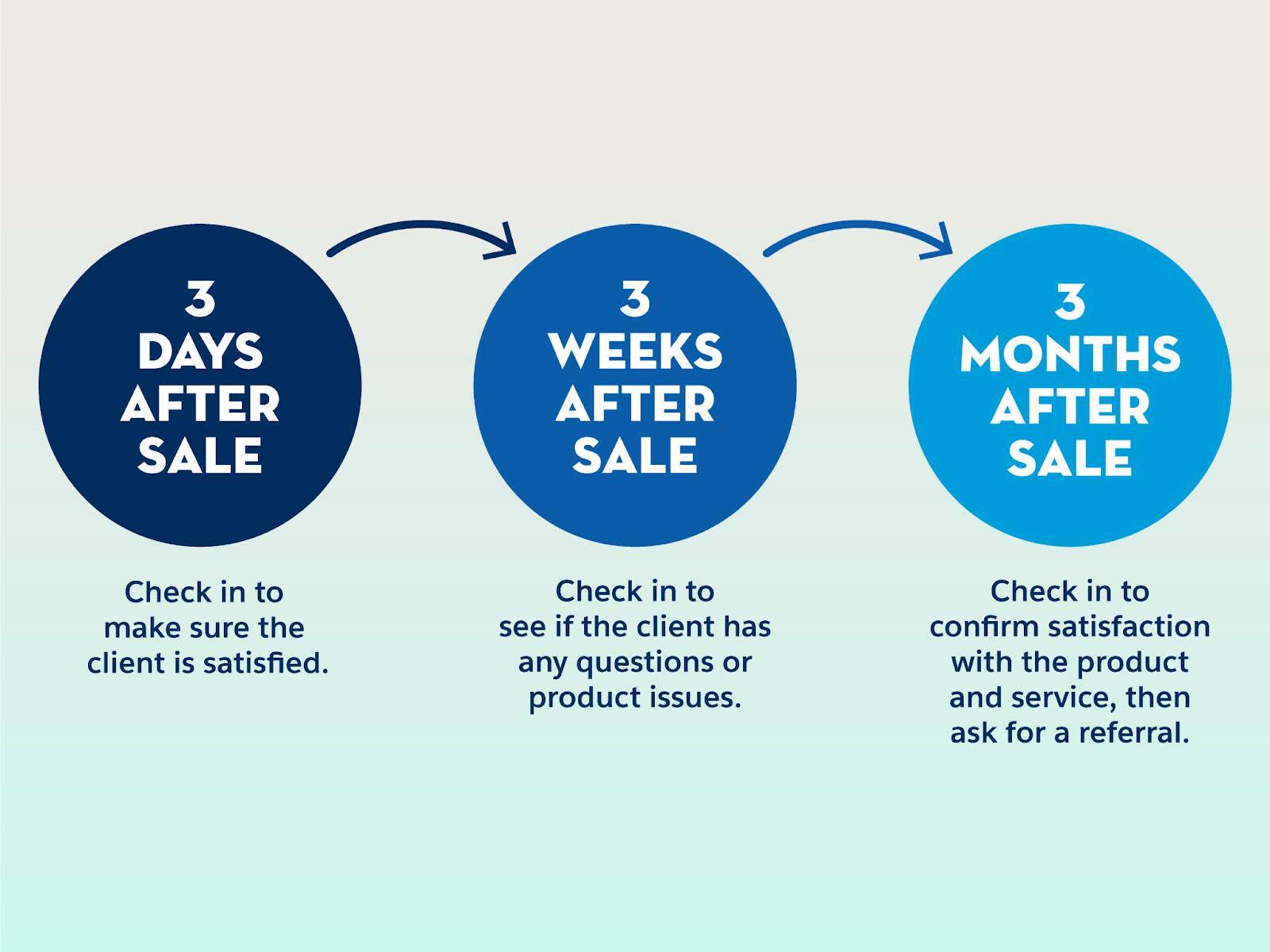Avoid Common Sales Mistakes
Learning Objectives
After completing this unit, you’ll be able to:
- Understand and avoid common mistakes in the sales process.
Common Mistakes
Following the four stages of the sales process—research, prospecting, sales call and close, and relationship building—helps guide you through a deal from start to finish. But it’s not foolproof if you’re not diligent about sticking to the necessary steps. This unit highlights what not to do to avoid derailing the sales process—and advice on how to avoid them. Here are common sale process don’ts.
Don’t Go in Unprepared
Research is key to successful sales. When done correctly, it allows you to speak confidently about what you’re selling and what problems it solves. When done poorly—or not at all—prospects lose confidence in your product and business.
Take the time to understand both what you’re selling and your target audience before you ever make a sales call. Not only will you avoid embarrassing fumbles, but you’ll be able to address unique problems and value propositions in your prospect communications.
Don’t Skip the Discovery Call
Many reps think that a qualifying call is sufficient background to pick out the best prospects on their list. In most cases, however, this call is very high level and doesn’t adequately paint the picture of a prospect’s needs.
Don’t Make a Sales Pitch Before Qualifying a Lead
Many eager salespeople are so focused on quotas and commissions that they forget the qualifying and discovery calls and launch straight into the sales pitch. The result is often a dead end—the unvetted prospect has little interest, insufficient budget, or is not empowered to make buying decisions.
Take the time to learn about your prospect’s alignment with your products before a sales call and you’ll dramatically increase your chances of closing a deal.
Don’t Highlight Product Features, Highlight Value
It’s common for reps to lead a sales call touting product features. The problem is, prospects aren’t looking for features. They’re looking for solutions and value. Be sure you’re focusing on benefit. This is what will get them to buy—not the product or the company. Prospects are looking for results.
Don’t Be Unempathetic
Laser-focused on closing deals, reps can come across as pushy. Nobody wants to make a buying decision under pressure.
Don’t think of your prospect as a potential client. Think of them as a friend. Listen to their problems with empathy. It builds trust and loyalty, which makes a purchase decision easier.
Don’t Talk Too Much
Constant talking is often cited as the number-one mistake salespeople make. It alienates prospects and scuttles once-promising deals. In fact, many studies have demonstrated the negative impact of talking more than listening during sales calls. The takeaway is the same: Reps who consistently close deals listen more than they talk.
The golden ratio is hard to pin down, but many experts recommend a 60/40 split in favor of listening. This gives reps enough time to share value-based insights while making sure the prospect is heard.
Don’t Be Unprepared for Objections
There are countless potential objections to a sale: cost, poor timing, insufficient need, lack of product functionality, and so on. While these vary depending on the prospect, they’re often easy to anticipate. Unfortunately, many reps struggle to close sales due to common objections they don’t know how to overcome.
The best solution is to map out all likely prospect objections before you make your pitch. Then, use the three days, three weeks, three months follow-up sales strategy you learned about in the previous unit, along with your product and prospect research, to prepare empathetic and impactful responses.

Don’t Make Sales Calls Too Long
In the era of virtual selling, reps often struggle to keep calls short enough to retain prospects’ attention. This result is poor engagement and waning product interest. Fortunately, the solution is easy: Keep your calls (in-person or virtual) to 30 minutes max. This forces you to avoid tangents and focus on sales-critical information.
Don’t Wait Too Long to Follow Up
The longer you wait to check back in after a call, the more likely your prospect goes from hot to cold. Lazy or distracted reps sometimes leave days between the sales call and their follow-up email. By that point, the interest generated in the product has faded, making the close far more difficult. Avoid this pitfall by sending follow-up messages immediately after your sales call. And keep following up—until a customer tells you to stop.